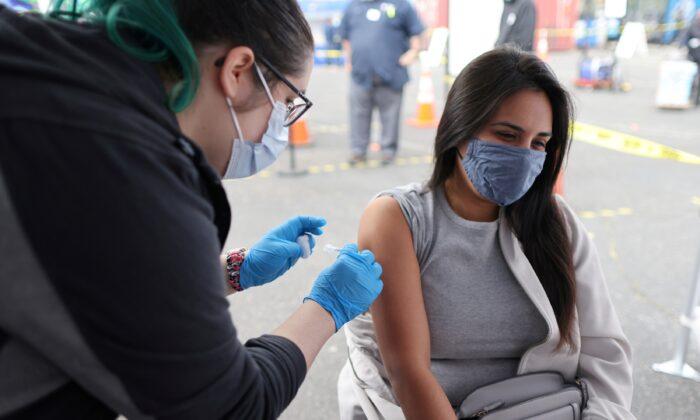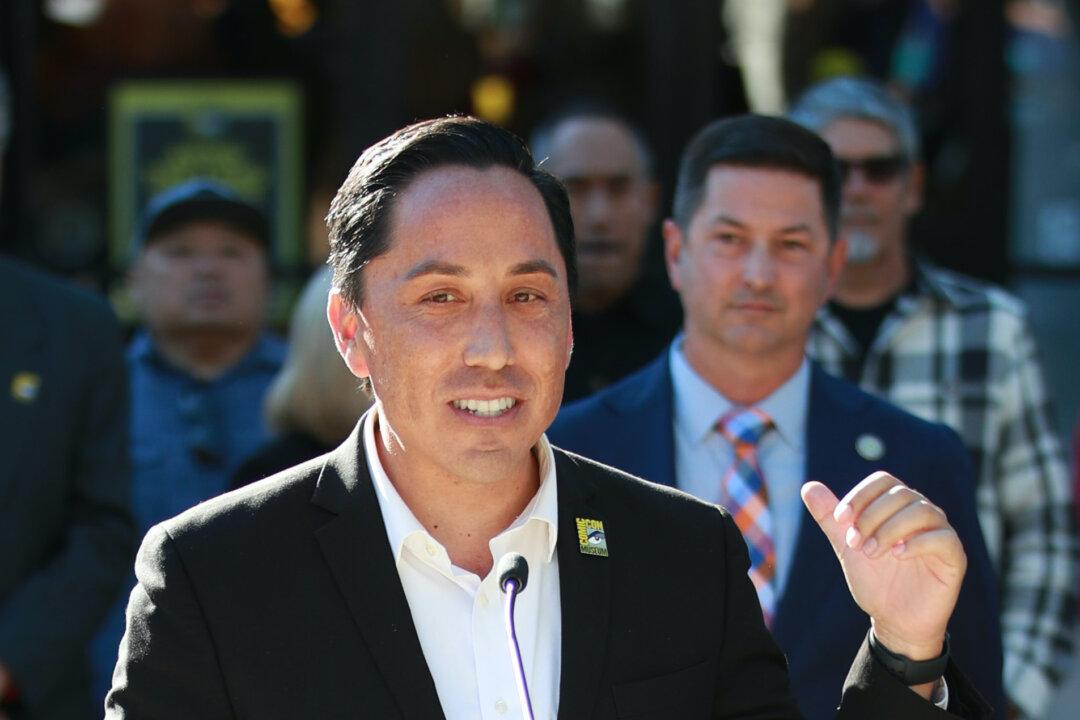SANTA ANA, Calif.—Orange County’s weekly averages for COVID-19 doubled on July 20, but hospitalizations decreased.
The county’s case rate per 100,000 residents increased from 2.6 to 4.9 and the test positivity rate jumped from 1.8 percent to 3.3 percent. The county’s Health Equity Quartile rate, which measures the disadvantaged communities hardest hit by the pandemic, increased from 1.9 percent to 3.4 percent.
Hospitalizations declined from 140 to 126, but the number of intensive care unit patients remained at 59.
The state releases weekly averages on Tuesdays.
The county had recently been reporting coronavirus statistics once a week, but switched on July 19 to a more frequent schedule of releasing numbers every weekday in light of the increasing number of infections.
The Orange County Health Care Agency (OCHCA) reported 315 new cases on July 20, bringing the cumulative total to 259,695 cases since the pandemic began. Officials logged one new COVID-19 fatality, which occurred on June 13. That upped the cumulative total to 5,136 deaths.
The death toll for this month so far is one. The death toll for June is 15; 22 for May; 43 for April; 198 for March; 610 for February; 1,563 for January—the deadliest month of the pandemic so far—and 967 for December, the next deadliest.
“The hope is that we don’t see much more of an accelerated pace of COVID than we saw before vaccines were widely available,” Orange County Chief Executive Frank Kim told City News Service on July 19. “At our peak, we had 79 cases per 100,000, with a 19.7 percent positivity rate. ... We’re hoping we don’t see those types of numbers again.”
The high number of unvaccinated patients is “hopefully a reminder to the public that when they seek the risk of COVID, they would ask questions, get educated, and consider the voluntary vaccine,” Kim said.
The county had 1,851,432 fully vaccinated residents out of its 3.2 million population as of July 15, according to the OCHCA.
Vaccination rates have flattened to levels not seen since January when they were being rolled out mostly to seniors, first responders, and health care providers.
Orange County officials have not discussed any sort of new mask order, Kim said.
Andrew Noymer, an epidemiologist and UC Irvine professor of population health and disease prevention, previously said that lifting the mask mandate for the vaccinated made sense to serve as an incentive for residents to get inoculated. But on July 19, he said the new, more contagious Delta variant is changing things rapidly.
“I really have my doubts whether Americans will mask for 36 months uninterrupted, and I stick by that,” he said. “There was a period where it really looked like we could get away with it, and I didn’t see what was wrong with giving people a break. But that kind of presupposes that if you made them mask 36 months unabated that they wouldn’t revolt eventually. It’s a battle of counterfactuals.”
But now “we’re really between a rock and a hard place,” he said. “I’m still unmasking at the grocery store because I’m vaccinated. But I’m not that far off from donning the mask again. But I’ve also always been clear I follow the posted orders. If I lived in LA, I would mask, but for right now I haven’t been masking because I’ve been vaccinated.”
For now, the vaccines have proved effective against infections and severe illness, Noymer said.
“The thing that worries me a little bit is that both are trending upward,'' Noymer said of infections among vaccinated and unvaccinated. “So even the line for new cases among the vaccinated is trending upward as well, and that concerns me a little bit. It’s trending up a lot less fast than the trend among the unvaccinated.”
Studies in Israel are showing the two-dose vaccines are 64 percent effective against infections for the Delta variant, Noymer said.
“We’re definitely in for a wild ride, I’m afraid,” he said.
The University of California system is requiring vaccinations for students before the fall quarter, but it’s unclear how effective it will be with in-person learning.
“There will be a vaccine mandate (at UC campuses),” Noymer said. “The question is, is that enough in face of these breakthrough infections. The average age of the faculty is much higher than the students, so it’s a higher stakes question for us faculty members.”
Noymer said it would make more sense to continue virtual learning instead of masking up in the classroom.
“I’m not teaching in a mask,” he said. “I’m sorry. If I have to teach in a mask, I'd teach by Zoom.”





